Georgetown Walnut is a beautiful hand scraped hardwood floor with natural color variation and subtle shadowed edges. This walnut plank is a refined, yet elegant wood floor that blends perfectly in any home. Learn More
Hand Scraped Wood Floors
Hand Scraped Wood Floors Guide

Hand Scraped Wood Floors: A Blend of Tradition and Modernity in Architectural Design
Introduction
In the realm of modern architecture and interior design, Hand Scraped Wood Floors stand as a testament to the harmonious blend of traditional craftsmanship and contemporary aesthetics. Esteemed by architects, designers, and building contractors, these floors offer a distinctive character that elevates any space. The allure lies in their aesthetic versatility, catering to a range of design themes from rustic charm to elegant sophistication. Additionally, the growing emphasis on sustainability makes these floors increasingly appealing to professionals seeking eco-friendly options.
Types of Hand Scraped Wood Floors
Hand Scraped Wood Floors are not a one-size-fits-all solution. The market offers a variety of wood types, each with unique characteristics that resonate differently with architectural styles and design themes.
- Oak: Renowned for its strength and durability, oak is a popular choice. Its prominent grain pattern adds depth and character, making it ideal for traditional and contemporary spaces. The wood's natural color variations range from light to rich amber, accommodating diverse design palettes.
- Hickory: Hickory stands out for its extreme hardness and striking color contrasts. This makes it a suitable choice for high-traffic areas, offering both resilience and a dynamic aesthetic. Its bold patterns are a favorite in designs that aim to make a statement.
- Maple: Maple offers a subtler grain pattern, often preferred for its uniform appearance. Its light color palette brings a sense of openness and is often chosen for Scandinavian and minimalist designs.
- Walnut: Walnut's rich, dark tones provide an air of luxury and elegance. Its softer nature makes it less suited for high-traffic areas but perfect for adding warmth and depth to more intimate spaces.
Installation and Environmental Suitability
Each wood type presents unique implications in terms of installation and durability. For instance, the hardness of hickory demands more effort during installation but offers greater longevity. In contrast, walnut, while easier to install, may require more maintenance.
When considering environmental suitability, factors such as moisture levels become critical. Woods like oak and hickory, with their dense structures, are more resilient in varying humidity levels, making them suitable for areas like kitchens or basements. Conversely, walnut and maple might be more appropriate for controlled environments.
Sustainable Practices in Hand Scraped Wood Floors
Sustainability in flooring materials is no longer a luxury but a necessity. Professionals are increasingly sourcing wood from responsibly managed forests, ensuring minimal environmental impact. The hand scraping process itself, often done using traditional tools, also leans towards a more sustainable approach, reducing the reliance on heavy machinery.
Technological Advances
The field of Hand Scraped Wood Floors has not been left behind in technological advancements. Recent innovations include improved finishes that enhance durability and resist wear, making these floors more practical for varied environments. Installation techniques have also evolved, with systems that allow for easier and more efficient laying of floors, saving both time and resources.
Conclusion
Hand Scraped Wood Floors are more than just a flooring option; they are a design statement, imbued with history and character. The choice of wood type should be a thoughtful decision, considering both aesthetics and functionality. Oak and hickory offer durability and bold patterns, suitable for high-traffic areas and vibrant designs. Maple and walnut, with their subtler tones, cater to more serene and luxurious spaces.
The selection of these floors should also align with sustainable practices, reflecting the modern professional's commitment to environmental responsibility. And with technological advancements making these floors more durable and easier to install, they present a practical yet elegant solution.
Incorporating Hand Scraped Wood Floors into a project can profoundly impact the space's ambiance, adding a layer of depth and warmth that few other materials can match. As architects, designers, and contractors, understanding and utilizing the unique qualities of these floors can significantly enhance the functionality and aesthetics of any space, creating environments that are both beautiful and sustainable.
Disclaimer: The information provided in this article is for general informational purposes only. While we strive to ensure the accuracy and reliability of the information presented, we make no warranties, express or implied, about the completeness, accuracy, reliability, suitability, or availability with respect to the content. Any reliance you place on such information is strictly at your own risk. We recommend consulting with professionals for specific advice tailored to your project’s needs, particularly regarding building codes, regulations, and product specifications.
Under no circumstances shall we be liable for any loss or damage, including without limitation, indirect or consequential loss or damage, arising from the use of, or reliance on, the information provided in this article.
Featured Brands
The Best 10 Hand Scraped Wood Floors Brands
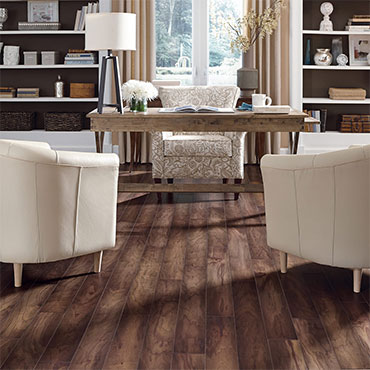
Mannington Hand Scraped Wood Floors
Profile | Website | Warranty | Install | Maintain | GreenGeorgetown Walnut is a beautiful hand scraped hardwood floor with natural color variation and subtle shadowed edges. This walnut plank is a refined, yet elegant wood floor that blends perfectly in any home. Learn More

Bruce Hand Scraped Wood Floors
Profile | Website | Warranty | InstallBruce hand-scraped hardwood flooring has a time-worn appearance. The color finish complements any design – from rustic to modern. Learn More

Mullican® Hardwood Flooring
Profile | Website | Warranty | Install | Maintain | FAQsSince its founding in 1985, Mullican Flooring has dedicated itself to creating the highest-quality hardwood flooring in the world. The company’s founders knew the combination of precision milling, advanced kiln-drying techniques and the most demanding inspectors available would result in products that would be unmatched by its competitors. Learn More
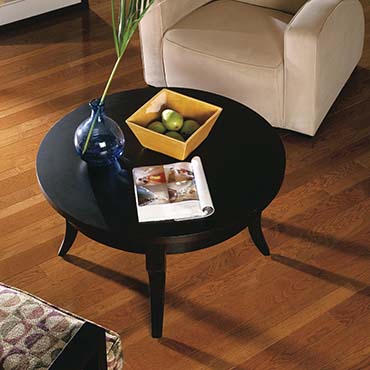
Somerset Hardwood Flooring
Profile | Website | Warranty | Install | Maintain | FAQsSomerset Wood Products is one of the largest manufacturers of Appalachian lumber and flooring in the midwest. Our corporate headquarters is located in Somerset, KY. We have two supporting production facilities, also located in the Somerset area, with a staff of over 300 employees. We also employ a full time forester, to oversee responsible forestry management practices that exceed Best Management Practice standards. Learn More
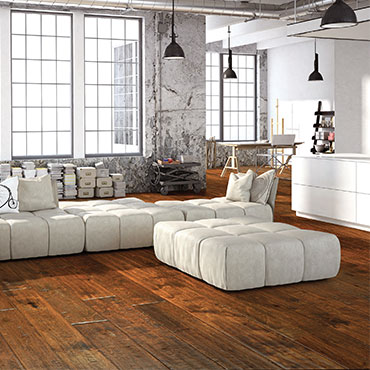
Johnson Hand Scraped Wood Floors
Profile | Website | Warranty | Install | Maintain | FAQs | GreenDesigned with the spirit of the American frontier in mind, the Frontier series represents the culture and beauty of the mid-west. Choose from hand carved wood planks in color tones that are reminiscent of westward expansion farms and ranches. The entire series is made from birch hardwood due to durability, flexibility, and the attractive grain pattern. Learn More

Kraus Hand Scraped Wood Floors
Profile | WebsiteAnnapolis Valley offers high styled visuals in wire brushed, handscraped and smooth finishes. This engineered hardwood includes a stable guard high density fibre core. Available in Oak, Hickory and Maple species. Learn More
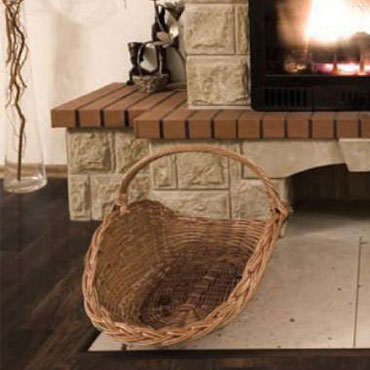
Casabella Handscraped Asian Walnut
Profile | WebsiteThe beautiful rustic look that you can get from the hand scraped Asian Walnut is one which allows for all natural characteristics in hardwood, including knots, color variations and chatter marks. This beautiful look is available in both solid and engineered constructions. Learn More

Lamett® Hardwood Flooring
Profile | WebsiteLamett has grown into the undisputed trendsetter in Wood, Laminate, and Luxury Vinyl flooring. Learn More
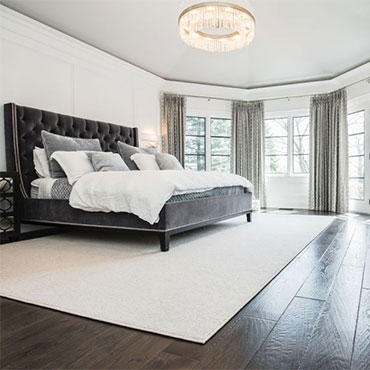
Superior Hand Scraped Wood Floors
Profile | WebsiteEach plank in the Antique Series is scraped by hand resulting is a unique, character rich finish. The rustic features of these boards cannot be mirrored in machine-scraped floors. Learn More

Green Touch Hand Scraped Wood Floors
Profile | WebsiteGreentouchflooring Floor is a leading specialty wholesaler offering reliable elegant and full selections of ceramic, stone, wood, and laminate flooring in the market. Learn More
Hand Scraped Wood Floors News
Latest Hand Scraped Wood Floors News
Hand Scraped Wood Floors...Hand Scraped Wood Floors: Timeless Elegance Meets Modern Design In the ever-evolving world of interior design, hand scraped wood floors stand as a testament to both timeless elegance and contemporary sophistication. This unique flooring option, known for its rustic charm and distinct character, has become increasingly popular among interior designers, decorators, and design con... |










